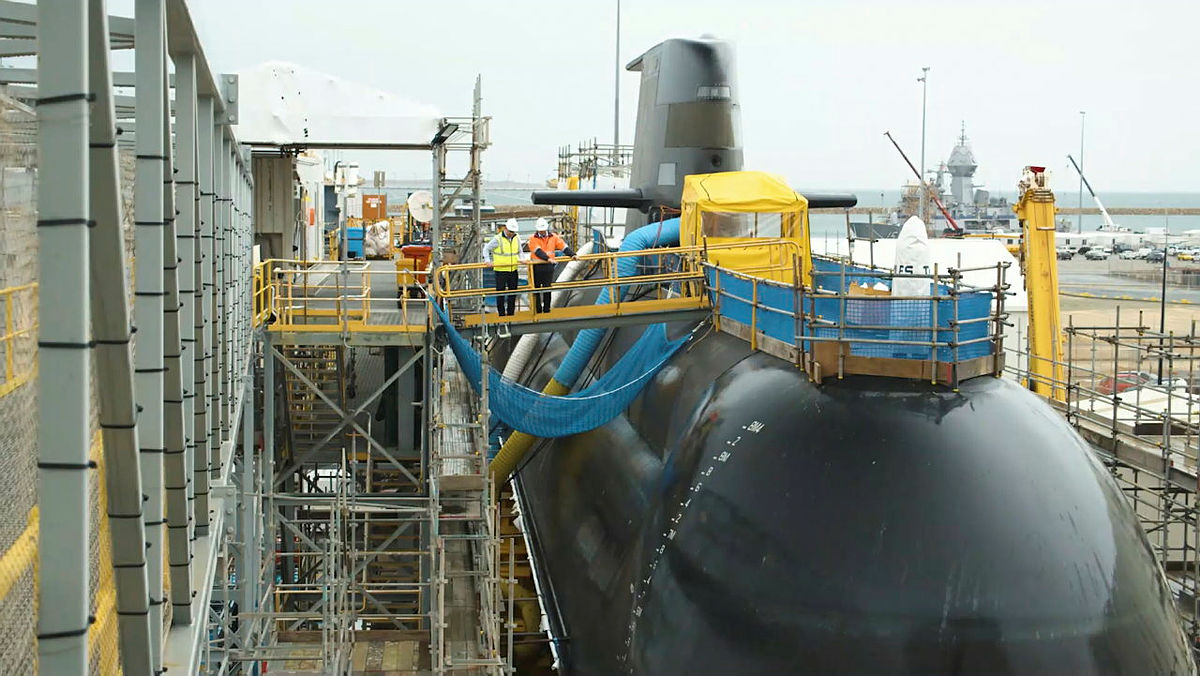
British media reports indicate that the UK Ministry of Defence intends to sign a contract with BAE Systems for the ‘detailed design and long lead items’ of a new class of submarine.
I wonder what that contract will say about the Australian dimensions of the project. At the minimum, this should include an Australian presence in the managerial, engineering and naval architecture elements of the design team. The detailed design phase must consider the Australian standards to be applied and local industry content and supply chains. If we miss the starting gun we will never catch up.
Recent discussion on the need to reboot Australia’s defence industry laments Australia’s failures while citing overseas successes. The Collins-class submarines and Anzac-class frigates were Australian success stories. Both mandated a level of Australian content—70% for the Anzac and 60% for the Collins. Both projects exceeded these figures, creating ongoing Australian self-reliance using local supply chains.
Pacific Marine Batteries Defence grew from the initial Collins-class local content requirements. PMB was established on a greenfield site in Adelaide undertaking battery system design work, manufacturing 50% of the first battery set and every Collins-class battery since. The company is now among the largest global manufacturers of submarine batteries, including developing lithium-ion and nickel-zinc-based battery systems, and it has opened PMB Battery Technologies UK.
For the Collins sonars, the prime contractor, Thales, made the acoustics for bow, towed and passive ranging arrays in Australia. Today the bulk of the Collins sonar system—the biggest, most extensive and most powerful sonar suite ever installed in a conventional submarine—is locally produced. Many UK sonars use acoustics manufactured by Thales Australia and its local suppliers. Just one of its many developments was a unique civil geophysical array earning more thab $350 million in exports. Today, Thales Australia exports more than 80% of its locally manufactured acoustic sensors to Australia’s allies, including the UK, US and France.
The ‘wet end’ (transducers, hydrophones, and the like) are predominantly piezo ceramic. Australia provides a viable alternative to the world’s dominant manufacturer of that material, China.
A smaller but also critical example is MacTaggart Scott, which established an Australian company, with support from the Department of Defence, to provide a supply chain to refurbish the Collins’ emergency propulsion unit, towed-array handling system, outboard valves and actuators including the hydroplanes and, more recently, mast-raising equipment.
The initial project office with a team of four has grown to 25 people in specialised facilities.
The most significant change has been the massive shift in Australian industry capability and content. There are around 80 approved suppliers using 80% Australian content during refurbishment flow work down and outwards, contributing to and increasing the number of jobs in defence industry that would otherwise have gone offshore.
MacTaggart Scott Australia is now a successful stand-alone company undertaking refurbishment and supplying new, Australian-built replacement items. It is involved in research and development work adding improvements to the equipment in Australia and is seeking an export licence to supply Australian-built items to overseas customers.
None of the Australian industry policies that have been put in place since the mandated content strategy was abandoned have achieved anything like these successes. Such industrial policy instruments became unfashionable because economists tend to regard local content schemes as a backdoor means of protecting local industry, with the additional drawback that they are less transparent than a tariff or subsidy.
That may be true in industries in which there’s a global level playing field, but it’s clearly not the case in defence industry in general and naval shipbuilding in particular. Most countries support or protect their own defence industries assiduously for strategic reasons but are also keen to capture as much export business as possible. This provides additional income for activities that generally have only a modest output and few growth opportunities, while also giving rise to cost reductions by taking advantage of greater scale.
For these reasons, both the UK government and BAE Systems will be working very hard in the SSN AUKUS program to minimise Australian industry content to the benefit of British industry. The Australian government must match this vigorously and ensure that Australian industry receives its rightful share of the program.
Mandated percentages make Australian companies immediately more competitive by requiring offshore equipment suppliers to find and transfer technology to Australian partners, or to set up locally. Primes find a local player (like PMB) with obviously high Australian content attractive to boost their overall offer.
Mandated percentages play to the advantage of local industry as both a pull and a push factor in the market. Primes, such as the one Thales Australia was bidding to, wanted a maximum local content percentage as well as best the price and performance, plus the lowest risk.
A mandated percentage is the simplest policy to implement and audit.
The primary objective of this policy is to achieve high operational availability. Armed forces are an industrial product—a submarine without working sonars and batteries, or unable to raise its periscopes and other masts, is confined to harbour. High operational availability is best achieved by an Australian supply chain.
The government must act now to ensure that any contract for the detailed design of SSN AUKUS has a mandated (and enforceable) framework for Australian industry involvement in the design, procurement and production. Given the tight timeline for a decision—the contract is about to be let—we should start with something we know worked well last time we built a submarine as it led to an Australian-based supply chain for over 90% of the sustainment costs. That ensured 60% of the cost of the submarine procurement and production would be spent in Australia. After all, Australia will be building more than half of the submarines to be constructed under this project.

